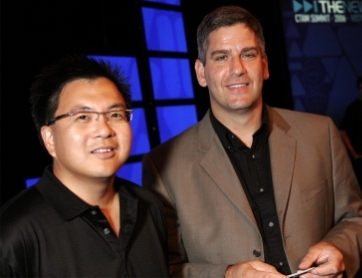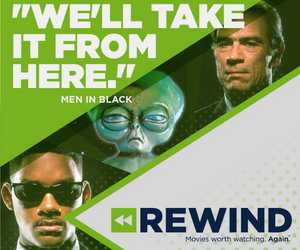
BOSTON – The future weighed heavily on the minds of marketers at this week’s Cable Telecommunications Association for Marketing Summit held in Boston Monday to Wednesday.
**********
At first glance, having the vice-president of product marketing from Neustar – a third party provider of local telephone number portability for network operators – seemed a bit of a stretch. But, said John Ticer, he’s in a unique position, having to deal with wireless, wired, VOIP and cable telephony providers and make their systems talk to one another.
Each of those networks and their companies were developed "in stovepipes" aimed at doing what they do best, said Ticer. There was no consideration of making their nets talk to each other or do much else other than voice or video or rudimentary data.
"There were no scenarios that contemplated Sprint would be a reseller for Comcast and that Comcast would be a reseller for (video game maker) Electronic Arts," said Ticer. Current and future IMS (IP or Internet Multimedia Subsystem) applications contemplate those types of things as IMS is geared towards sending all sorts of advanced services from platform to platform, network to network.
Of course now all of the network owners are contemplating new services like hosting a VOIP to VOIP call while simultaneously broadcasting a music video over the same stream between friends. But there’s no way that will work given than most calls – even VOIP calls – ride at some point on the PSTN, which can’t transmit such advanced features. We simply aren’t there yet, he explained.
Not only is the industry years away from making money at such new, advanced services, the cable and telecom industry is still years away from making their networks seamlessly sync together for such things. A cable net and a traditional wireline net can barely shake hands, let alone dance. "It will be three years before the plants are going to be able to really talk to each other – like they never have before," predicted Ticer.
But, he added, if the MSOs and telcos don’t hurry up, other companies will try to fill the void and bypass the traditional distributors.
**********
Intel, that microprocessor company, shipped 60 million TV tuners in 2005. The company has a serious interest in where the video market heads but in the end, believes it will be successful whether cable, or telco or wireless or someone else leads. Intel chips are in countless devices around the world.
Donald MacDonald, Intel’s vice-president and general manager outlined Intel’s overall media vision, which centres heavily on its new Viiv platform, which Cartt.ca has covered before. 
The key to making happy customers is to let them use the technology to take charge of their lives. Intel’s "ethnographic" research says people thrive on six elements: Control; Advancement; Togetherness; Access; Love and Spirituality; and Escape. "Confused customers don’t buy, complexity doesn’t sell," added MacDonald in describing how people don’t want to feel lost in their own living room, unable to deal with the technology in, or sitting under, their TVs.
Pictured is Rogers Communications chief strategy officer Mike Lee, who introduced MacDonald to the delegates.
**********
The most anticipated session was Shawn Gold’s. He’s the senior VP marketing for the world’s largest social networking site, myspace.com. In introducing him, David Nathanson, the GM and SVP for horsey channel TVG talked of "Rachel", a waitress he met recently. She told him she didn’t own a television, saying "I don’t need one. Myspace is my entertainment," Nathanson recounted.
"That’s bad news for the pay television industry," he added, "because Rachel is not unique."
In fact, myspace.com will surpass 100 million users by the end of this month and by the fall will have more users than there are TV homes in the United States. Over 30 million songs of some kind are streamed each day from myspace and it’s not just a home for teens. Of its users, 25 million are over 35 years old and that demo is the fastest growing myspace group. (Gold didn’t address the problems myspace has had with undesirables who virtually stalk some of the portal’s younger members.)
However, myspace isn’t some nutty web maverick (despite some of the content found on its members pages). Owned by Rupert Murdoch’s News Corp., it wants to work with brands and existing content and distribution companies.
In fact, the company’s "sizzle reel," as Gold called it, was nothing but a steady stream of mainstream media mentions of myspace, which validates the concept of course, and also means it’s a mass media outlet now – as surely as any other existing, older media outlet.
But what myspace has that the more mature media outlets (like the Globe and Mail, CKNW AM, CTV, canada.com and others) don’t have, is the same relationship intimacy with its users. Myspace is where members often post their most personal information for the world to see. They count numerous friends and are rabid consumers of the portal.
For the teens the individual pages "are a metaphor for their rooms," said Gold. The pages can be messy and impenetrable but you know what they like. And myspace itself is the new hangout. The roller rinks and burger joints of old are gone – or too far of a drive to get to. Some malls and stores ban kids without adults altogether and kids lives are so scheduled, they’ve got little time or ability to hang out in real time, he explained.
Myspace is how they goof with their friends – even if they’ve never met them.
Myspace is a brand-builder, too. It recently ran a contest in conjunction with the last X-Men movie where it created a myspace identity for the movie that saw over two million people register as an X-Men friend. It did something similar with the Pirates of the Caribbean movie where the winner got to interview the stars and play celebrity journalist.
And with 100 million users – all talking to each other and recommending music and video and other products – this can be a marketers dream, if used correctly. Myspace has "channels" for a huge number of segments, from fashion to sports to art to religion. It aggregates content and aggregates an interested, interactive, targeted audience. Thankfully for network owners, those members need robust broadband connections to make the best use of myspace.
**********
Monetizing portable or mobile media is a long way away, according to a Tuesday panel. Matt Stump, senior editor and analyst with One Touch Intelligence painted a picture of a new piece of the video industry that us clearly stuck in experimentation mode: wireless.
There are various prices and packaging available to the mobile TV offerings from North American wireless companies. Some package in tiers like cable while others, like the Canadian wireless companies, sell 20 or so channels for a certain price per month.
Thanks to the expense – and the general lousiness of the video, sub numbers for the service are low – and not made public. Only MobiTV – which is deployed by Rogers, Telus and Bell in Canada – has published sub figures, saying it has 500,000 world wide.
Panelist Albert Cheng, EVP digital media with Disney ABC Television, said a distinction has to be made between mobile video and portable video. Mobile video, he said, are short clips available on the fly as a sort of video snack while portable video is potentially more valuable as users generally take the time to download interesting, higher quality, longer content, prior to traveling.



